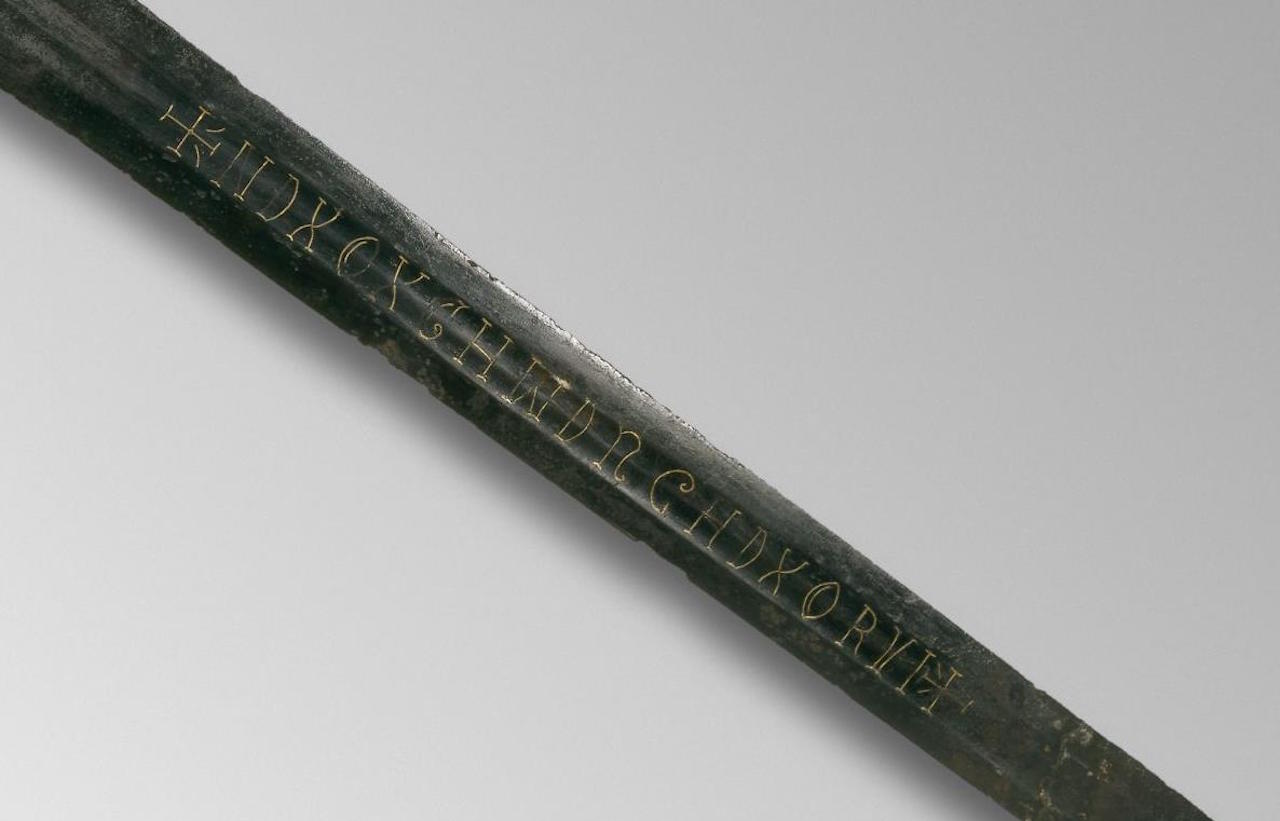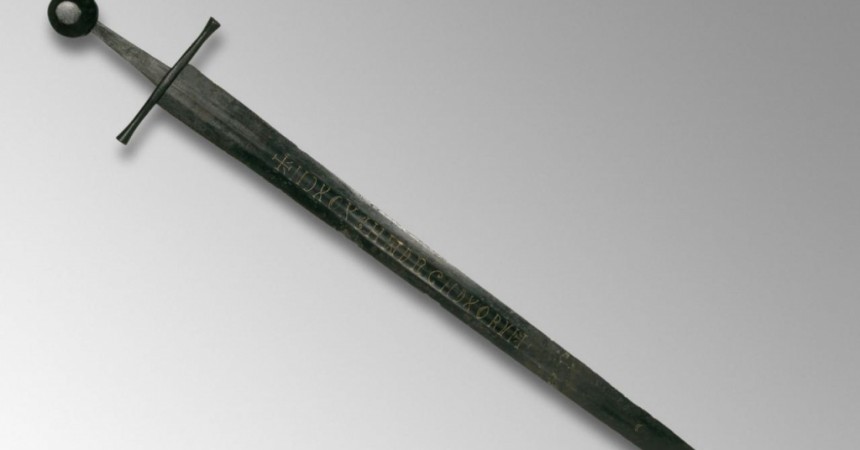The British Library is asking the internet for aid in deciphering a mysterious inscription on an 800-year-old sword. Discovered in 1825 on the river Withal in Lincolnshire, the sword is currently on view at an exhibition at the Library entitled Magna Carta: Law, Liberty, Legacy. As of this posting, Library researchers have yet to decipher the code. Comments are now closed on the original blog post, however those still curious are invited to share their thoughts on Twitter.
The ancient sword dates back to around the year 1200, a time when it was considered a status symbol for a knight to wield a sword with an inscription. This is according to Utrecht University professor Marc van Hasselt, who has provided some context for the sword’s origins on the British Library’s blog. According to van Hasselt, it is possible that a certain medieval workshop began making inscribed swords and selling them to the elite, perhaps with the pitch that these inscriptions imbued the weapons with mystical power. The blade of the sword appears to be made from German steel, while the hilt is English in origin.
The mystery inscription appears to read as a series of capitalized letters: +NDXOXCHWDRGHDXORVI+. Researchers thus far tend to believe that the words are an acronym for a religious prayer or invocation. Because Latin was the international language of the area at the time, it is highly likely that the letters represent Latin words or phrases.
 If a conclusion is reached, this won’t be the first time that internet users have successfully translated mysterious writing on ancient artifacts. In 2014 the University of Chicago Library held an online contest to see if internet users could help experts decode the unusual marginalia in one 500-year-old copy of Homer’s Odyssey. The text was eventually decoded by an ltalian computer engineer, with the help of google books and various online databases. As it turned out, the text was simply a rough French translation of the original Greek.
If a conclusion is reached, this won’t be the first time that internet users have successfully translated mysterious writing on ancient artifacts. In 2014 the University of Chicago Library held an online contest to see if internet users could help experts decode the unusual marginalia in one 500-year-old copy of Homer’s Odyssey. The text was eventually decoded by an ltalian computer engineer, with the help of google books and various online databases. As it turned out, the text was simply a rough French translation of the original Greek.
By Dallas Jeffs
